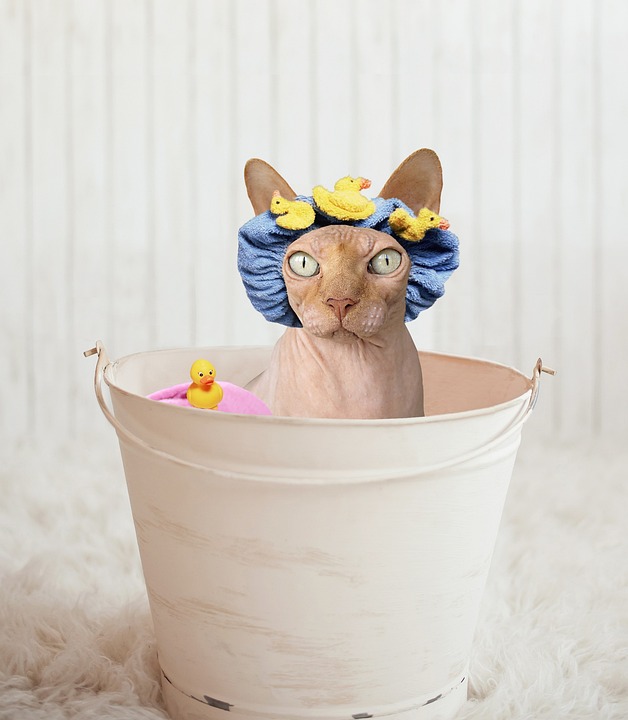Long-haired cats are undeniably beautiful and elegant creatures. Their majestic coats require extra care and attention to keep them in tip-top shape. Regular grooming is essential for maintaining the health and appearance of your long-haired feline friend. In this article, we will explore the importance of grooming, provide useful tips and techniques, and answer some frequently asked questions to ensure your cat’s coat remains fabulous and healthy.
Why is Regular Grooming Important for Long-Haired Cats?
Long-haired cats possess coats with a higher density of fur, which makes them prone to matting and tangles. Regular grooming not only prevents these issues but also offers several other benefits:
1. Mat Prevention: Daily grooming helps prevent mats from forming in your cat’s fur. Mats can be painful, as they pull on the skin and restrict movement. Regular grooming keeps your cat comfortable and prevents potential skin problems.
2. Shedding Management: Long-haired cats often shed more than their short-haired counterparts. Regular grooming helps minimize shedding, reducing the amount of loose fur that ends up on your furniture and clothing.
3. Health Monitoring: Grooming provides an opportunity to check your cat’s overall health. By running your hands through their coat, you can detect any abnormalities, such as lumps, skin irritations, or parasites, ensuring early intervention if needed.
4. Bonding Time: Grooming sessions can be a bonding experience for you and your feline companion. It allows you to spend quality time together, strengthening your relationship.
Essential Grooming Tools for Long-Haired Cats
To ensure effective grooming, it is important to have the right tools at hand. Here are some essential grooming tools for long-haired cats:
1. Slicker Brush: A slicker brush is a staple tool for long-haired cats. It has fine, short wires close together, which effectively remove loose hair and prevent matting.
2. Wide-Toothed Comb: A wide-toothed comb helps detangle larger knots or mats gently. It is ideal for working through your cat’s fur without causing discomfort.
3. Undercoat Rake: An undercoat rake is specifically designed to remove loose hair from the undercoat, which is crucial for preventing mat formation.
4. Scissors: Invest in a pair of rounded-tip scissors for trimming and removing small mats. Be cautious while using scissors to avoid accidental injury.
Grooming Techniques for Long-Haired Cats
Now that you have the right tools, let’s dive into some grooming techniques to keep your long-haired cat looking fabulous:
1. Regular Brushing: Brush your cat’s coat daily to remove loose hair, prevent matting, and maintain a healthy coat. Start by gently brushing against the hair growth to remove tangles, and then brush with the hair growth to smoothen the fur.
2. Target Mat Removal: If you encounter mats, be patient and work on them gradually. Use your fingers or a wide-toothed comb to loosen the mat from the edges, working your way through. Avoid pulling forcefully, as it may cause discomfort or pain.
3. Trimming Excess Fur: Regularly trim the excess fur around your cat’s rear end, paw pads, and belly to prevent feces or litter from sticking to the fur. Be cautious and use rounded-tip scissors to avoid accidents.
4. Bathing and Drying: Long-haired cats may require occasional baths to keep their coats clean and free from dirt and oils. Use a cat-specific shampoo and ensure thorough rinsing. After bathing, gently towel-dry your cat or use a low-heat blow dryer on the coolest setting to avoid overheating.
FAQs about Regular Grooming for Long-Haired Cats
Q1: How often should I groom my long-haired cat?
A1: Grooming long-haired cats should be a daily routine, especially during shedding seasons. Regular grooming prevents matting and keeps their coat healthy.
Q2: Can I use human grooming tools on my cat?
A2: No, it is not recommended. Human grooming tools may not be suitable for your cat’s delicate skin and fur. Invest in cat-specific grooming tools for the best results.
Q3: My cat hates grooming. Any tips to make it easier?
A3: Start grooming sessions gradually, offering treats and positive reinforcement. Make it a calm and comfortable experience. If needed, consult a professional groomer for assistance.
Q4: Should I shave my long-haired cat to avoid matting?
A4: Shaving should only be considered as a last resort for severe matting issues or during extreme heat. Regular grooming, however, can effectively prevent matting without resorting to shaving.
Q5: Can I groom my long-haired cat while they are sleeping?
A5: Grooming a sleeping cat is not advisable, as sudden movements during grooming may startle or distress them. Choose a calm time when your cat is awake and relaxed.
Remember, patience and gentle handling are key when grooming your long-haired cat. With regular grooming sessions and your loving care, your feline friend will maintain a fabulous and healthy coat that will turn heads wherever they go. Happy grooming!








